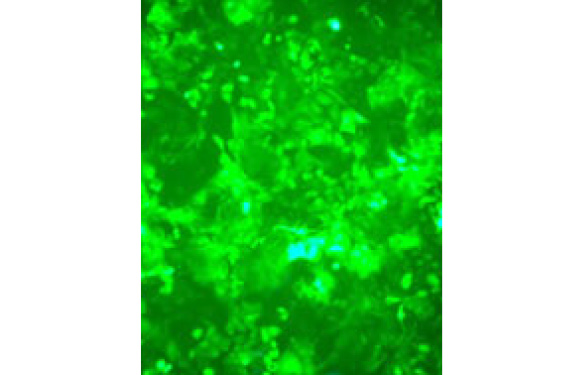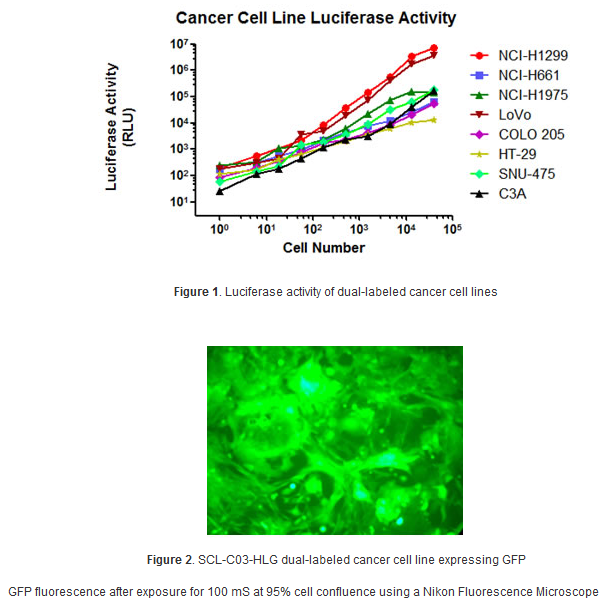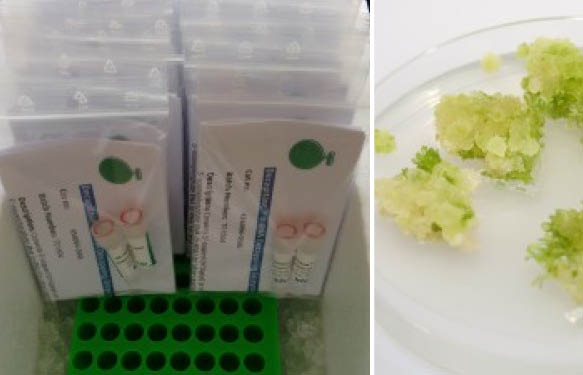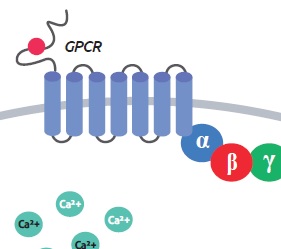In vivo monitoring of tumor growth and metastasis provides a powerful means for studying cancer properties and development of effective therapies. Mouse models created with tumor xenografts, resulting from subcutaneous or tail vein injection of cells, have long been used for such purposes. However, without a convenient means to visualize cancer progression in these animals, invasive surgical procedures are required in order to estimate the size and weight of primary and metastatic tumors, and cannot be used for early stages in tumor development. Surgery often requires sacrificing the animals, leading to the need for large numbers of individuals and increasing the cost and risk of sampling errors.
GeneCopoeia has recently announced the introduction of pre-made cancer cell lines labeled with GFP, and pre-made cancer cell lines dual-labeled with luciferase and GFP. A new powerful and sensitive mathods to follow tumor growth & metastasis in vivo!
18 GFP labeled cancer cell lines
These lines robustly express GFP, useful for in vivo tumor monitoring without the need for substrate perfusion, or for in vitro visualization and immunocytochemistry. The choice is large, among 18 pre-made lines (NCI-H1299, LoVo, SNU-475, KATOIII, HCC70, etc) from various tumor types, including breast, liver, pancreas, and colon. These cell lines are ideal for:
- Studying tumor cell properties using biochemical and genetic methods in vitro
- Monitoring tumor growth, progression, and metastasis in vivo in response to a variety of environmental stimuli, drugs, and other therapeutic treatments

17 Luciferase + GFP dual-labeled cancer cell Lines
These lines express high levels of luciferase, offering highly sensitive, non-invasive detection of cancer cell growth and progression in vivo, beginning soon after injection. These lines also robustly express GFP, useful for in vivo tumor monitoring without the need for substrate perfusion, or for in vitro visualization and immunocytochemistry.
Again, you can choose among 17 pre-made lines (HT-29, Panc 10.05, MDA-MB-231, NCI-H1975) from various tumor types, including breast, liver, pancreas, and colon for various experiment types:
- Study tumor cell properties using biochemical and genetic methods in vitro.
- Monitor tumor growth, progression, and metastasis in vivo in response to a variety of environmental stimuli, drugs, and other therapeutic treatments.
What about you?
Which methods are you using to follow tumor growth & metastasis in vivo! What are your favorite cell lines? Lease a comment below to chare your comment or contact me directly if yoy want to know more about these 35 GeneCopeia’s cell lines!




